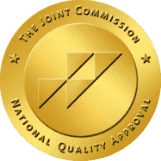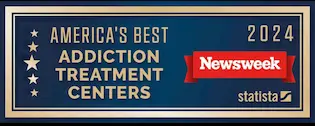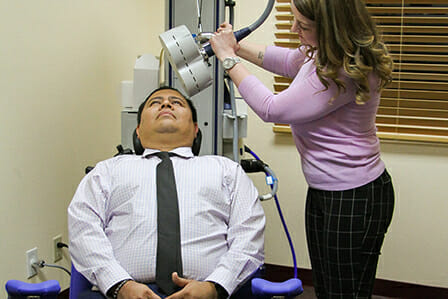ADHD and Addiction
ADHD and Addiction
ADHD and Addiction
ADHD puts individuals at more risk for a substance use disorder. Read here to find out more about ADHD and addiction.

Article Contents
What is ADHD?
According to the American Psychiatric Association, Attention-Deficit/Hyperactivity Disorder (ADHD) is one of the most common mental disorders affecting children.1 However, many do not realize it affects adults as well and can continue to cause issues well into adulthood. Researchers have not found a specific cause for ADHD. There is a genetic component, but other factors seem to contribute to the disorder as well. Extended factors of ADHD may include premature birth, incurring a brain injury, or having a mother that smoked, used alcohol, or was under extreme stress during pregnancy. In the past, ADHD and ADD were two separate diagnoses depending on whether a child was hyperactive or not. In recent years, though, the ADD diagnosis is included in ADHD whether or not there is hyperactivity.Statistics on ADHD
ADHD is incredibly common. According to research, 8.4% of children experience ADHD today.2 In adults, only 2.5% are currently diagnosed.3 However, these statistics are likely far underreported. Experts estimate that only 20% of adults who meet the criteria for ADHD have been properly diagnosed or treated.4Types of ADHD
ADHD usually presents as three types, depending on which symptoms are predominant. According to the CDC, the types include:5- Inattentive ADHD: This type usually means that the person is easily distracted. They forget or miss details that are important for school, work, or life. They tend to be inattentive.
- Hyperactive-Impulsive ADHD: In this presentation, it is difficult for a person to sit still. They fidget or are overly talkative. Those with hyperactive-impulsive are restless and have issues with impulsivity. In children, this disorder can mean constantly running, jumping, or climbing. In adults, it means difficulty waiting to speak or listen to directions.
- Combination. This type of ADHD is when both present equally in an individual.
Signs and Symptoms of ADHD
There are no scientific tests to diagnose ADHD. However, each type of ADHD has certain characteristics that help with diagnosis. Children must have at least six of the symptoms for one type to fit the diagnosis, while those over seventeen need to have at least five symptoms.Inattentive Symptoms
- Does not pay attention to detail and makes careless mistakes in either work or school
- Issues with focusing on essential tasks or activities, such as conversations, reading, or lectures
- They seem elsewhere when someone is speaking to them
- They begin tasks but quickly lose focus and fail to follow all directions.
- Issues with staying organized. For example, they may have messy, disorganized work or miss deadlines.
- Avoids tasks that take sustained mental effort
- Loses essential things for daily life, like keys, wallet, or cell phone
- Forgets chores or errands
Hyperactive Symptoms
- Fidgets, squirms, or taps hands or feet
- Unable to stay seated in a classroom or workplace
- Runs and climbs at inappropriate times
- Unable to do activities quietly
- Always “on the go”
- Overly talkative
- Difficulty waiting for his or her turn
- Cuts in before another finishes speaking. For example, they may blurt out an answer to a question or finish another person’s sentence for them.
- Interrupts or intrudes
- Combination symptoms have both inattentive and hyperactive in equal measure.
The Connection Between ADHD and Addiction
Research shows that those who fit the criteria for ADHD are more likely to struggle with a substance use disorder. Researchers estimate that more than 25% of teens with a substance use disorder meet the criteria for having ADHD as well.6 Many individuals with ADHD turn to drugs and substances in an attempt to counteract the symptoms of ADHD. This method is referred to as self-medication, meaning an individual is medicating their symptoms through substance use. According to a recent survey, the substances most commonly abused for ADHD medication were alcohol and marijuana.7 These substances help depress the nervous system, thereby decreasing many of the over-stimulated symptoms associated with ADHD. Impulse control and behavioral issues can also lead to substance use disorder. Individuals with ADHD have a more challenging time controlling their impulses which, in turn, lead them to take and abuse substances they might not otherwise want to.Treatment for ADHD and Addiction
Before ADHD can be treated and controlled, the body needs to be free of any substances. Detox is the first step on the road to recovery and a vital part of managing ADHD.Therapies
Addiction and ADHD can be treated concurrently through a dual-diagnosis program. Both disorders need to be addressed and treated together for a successful recovery. Concentrating on substance abuse without providing support for ADHD can lead to a high occurrence of relapse because it does not address the underlying issues.
Counseling, family therapy, and self-help groups all provide vital treatment for dual diagnosis. These programs can help:
Find Help Now
Since we have experienced the emotional, mental, and physical effects of addiction firsthand, we are aware of them. Check your insurance or give us a call right away if you or a loved one is having trouble.
- Provide tools to manage ADHD through behavioral modification
- Identify triggers and learn impulse management
- Educate loved ones about ADHD and substance abuse
- Build self-esteem and support internal motivations
- Disrupt destructive thought patterns and behaviors.
ADHD Medication
Some individuals use alcohol and drugs to manage their ADHD symptoms. Medication can provide vital support to eliminate the need for drugs and alcohol for self-treatment in many cases. Because ADHD medication contains the controlled substances methylphenidate and amphetamine, some worry that taking medication may lead to abuse. However, this is not often the case. People who take medication to treat ADHD are less likely to have a substance abuse disorder.7Aftercare
While detox and treatment are important steps in recovery, they are not the end in themselves. Staying sober is an ongoing process. For those who meet the criteria of ADHD, maintaining their treatment is critical. Proper use of medication reduces symptoms of ADHD. Come up with a well-established plan to deal with any temptation you could run into in the future and develop healthy coping skills to handle triggers. Maintain connections with loved ones and consider joining a support group. By investing in aftercare and managing ADHD symptoms, sobriety can be a lifelong journey.Resources
- https://www.psychiatry.org/patients-families/adhd/what-is-adhd
- https://www.tandfonline.com/doi/abs/10.1080/15374416.2017.1417860
- https://pubmed.ncbi.nlm.nih.gov/19252145/
- https://adaa.org/understanding-anxiety/related-illnesses/other-related-conditions/adult-adhd
- https://www.cdc.gov/ncbddd/adhd/facts.html
- https://www.ncbi.nlm.nih.gov/pmc/articles/PMC2676785/
- https://www.additudemag.com/the-truth-about-adhd-and-addiction/
Related Content
- Opioid Addiction
- Stimulants Addiction
- Benzodiazepine Addiction
- Trauma-Informed Care
- Alcohol and Opioids
- Alcohol and Stimulants
- Alcohol and Benzodiazepines




